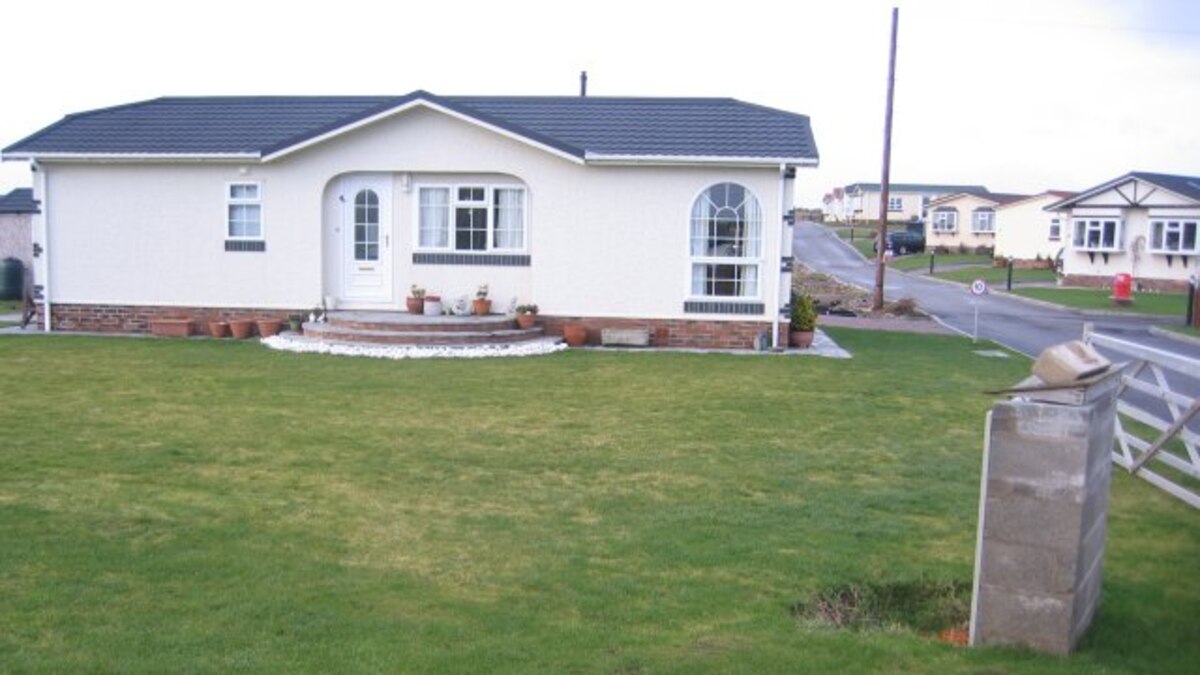
Ah, Central Florida in the winter! No snow to shovel, no ice to slip on. No need for a heavy coat. But winter brings new lawn-care needs for your yard in Lakeland. Check out our nine winter lawn care tips for keeping your Lakeland lawn healthy and looking good all season.
1. Understand the Type of Grass on Your Lawn
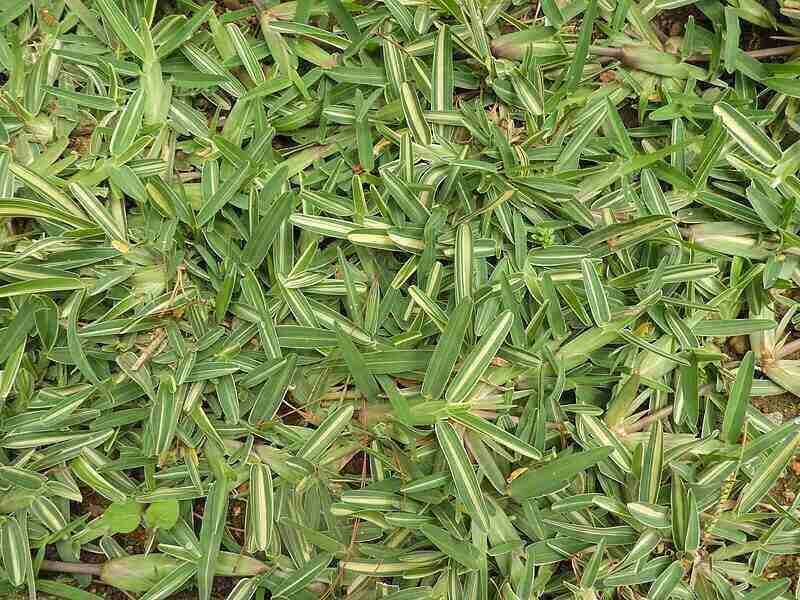
Photo Credit: Yercaud-elango / Wikimedia Commons / CC BY-SA 4.0
Generally, Florida lawns are made up of warm-season grasses, meaning they grow best during warm weather. (However, you may see some use of ryegrass during the winter months). The most popular warm-season grasses are:
- St. Augustine. This is the most commonly used grass across the state. It is adapted to the climate and has good salt tolerance, but isn’t good for constant traffic. St. Augustinegrass comes in standard cultivars (including Bitterblue and Classic) and dwarf cultivars Captiva, Delmar, Seville, and Sapphire.
For more information, see our guide on How to Care for St. Augustinegrass.
- Zoysiagrass. This is a slow-growing grass that holds up well to salt, shade, and foot traffic and needs less fertilizer. Zoysiagrass is one of the best grass types for the Tampa area but does go dormant more quickly under drought conditions.
- Bahiagrass. If you want a low-maintenance lawn, Bahiagrass is a good choice. It stands up to drought, needs less fertilizer, and is more resistant to pests and disease. The Argentine variety is best for lawns.
- Centipede. This slow-growing, coarse-leafed grass is well adapted to Lakeland’s soil. However, it has low salt, drought, and traffic tolerance. For more information, see our guide on centipedegrass maintenance.
- Bermudagrass. This is another widely used grass in Florida. It can take the heat, and tolerates salt, drought, and traffic. However, Bermudagrass can be high-maintenance and invade flower beds and walkways.
2. Understand Your Climate
Lakeland, which is part of the Tampa Bay area, offers hot and humid summers, with average highs in the 90s. Winters are generally mild, but temperatures drop enough to send your grass into dormancy. Lakeland gets around 2 inches of rain per month in winter, so you may have to adjust the watering schedule.
Like most Florida cities, winter lawn care in Lakeland begins with an eye on the weather forecasts: Hurricane season extends into November, making the city vulnerable to damage from flooding and high winds.
3. Fertilize at the Proper Time
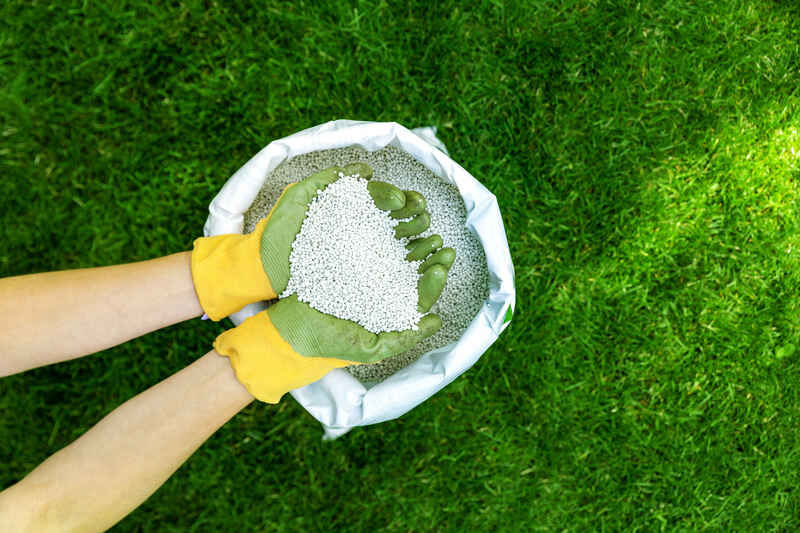
Before you load the spreader, check the local ordinances. Lakeland is in Polk County, which bans the use of landscape fertilizers containing nitrogen and phosphorus from June 1- September 30. The University of Florida suggests fertilizing in early October, then using a slow-release product in late May.
Other Fertilizing Tips:
Test the soil. Knowing — and applying — the nutrients your yard needs helps your yard and your lawn-care budget. The University of Florida Extension runs a soil-testing laboratory that offers results in 2-3 days.
Water after fertilizing. After applying fertilizer, water enough to get the granules off the grass and into the soil. This will avoid leaf burn and runoff.
Warning: Don’t fertilize if the National Weather Service warns that any of these conditions are likely within 24 hours:
- Flood
- Tropical storm
- Hurricane watch or warning
- Heavy rains
Respect the environment. Don’t spread fertilizer within 10 feet of a pond or other body of water. If granules land on the driveway or sidewalk, sweep them up. Don’t hose it into the storm drains.
4. Mow to the Proper Height
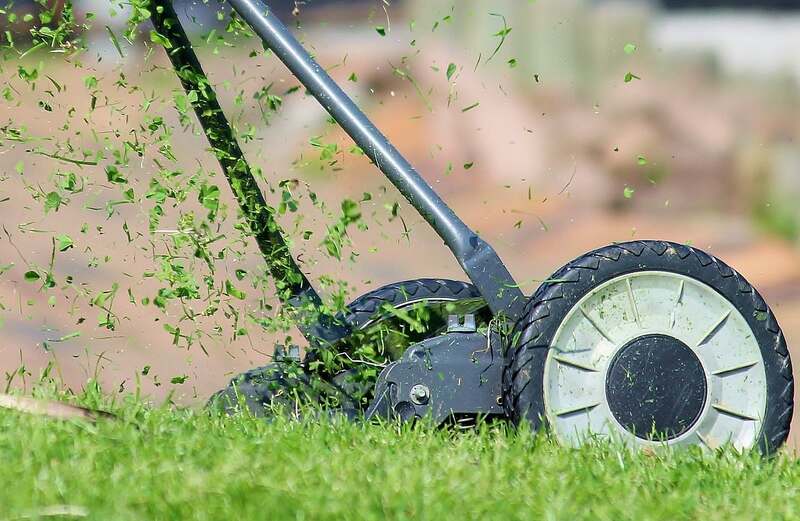
The bad news: You still have to cut the grass in winter. However, you can cut back to every other week, depending on the temperatures. How high should you mow the grass? The University of Florida’s Polk County Extension suggests the following:
- Bahiagrass. 3-4 inches
- St. Augustinegrass. 2 ½-4 inches, depending on the cultivar
- Zoysiagrass. 1-2 inches
- Centipedegrass and Bermudagrass. 1-2 inches
Other Lawn Mowing Tips:
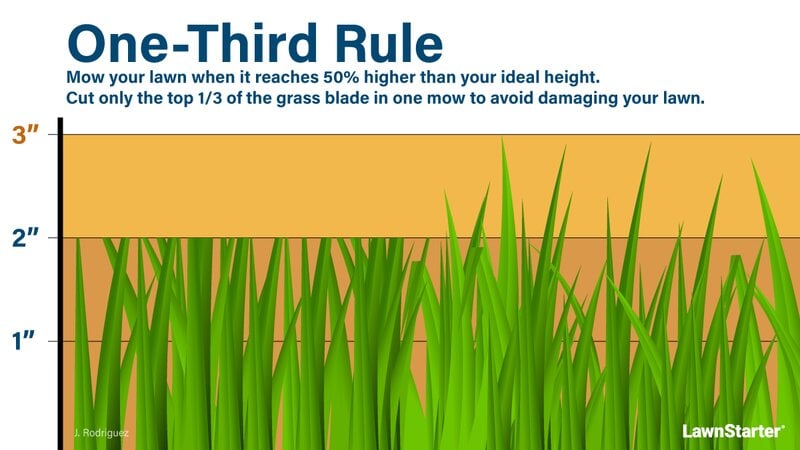
Use the one-third rule. This means you only cut off a third of the grass every time you mow. Grass blades create nutrients for the root system, so cutting too close deprives the roots of food.
Don’t bag clippings: They return nutrients and organic matter to the soil.
Keep the mower blades sharp: Dull blades tear the grass blades, increasing the risk of insects or disease. You can sharpen mower blades at home with a few tools.
5. Respect Watering Restrictions
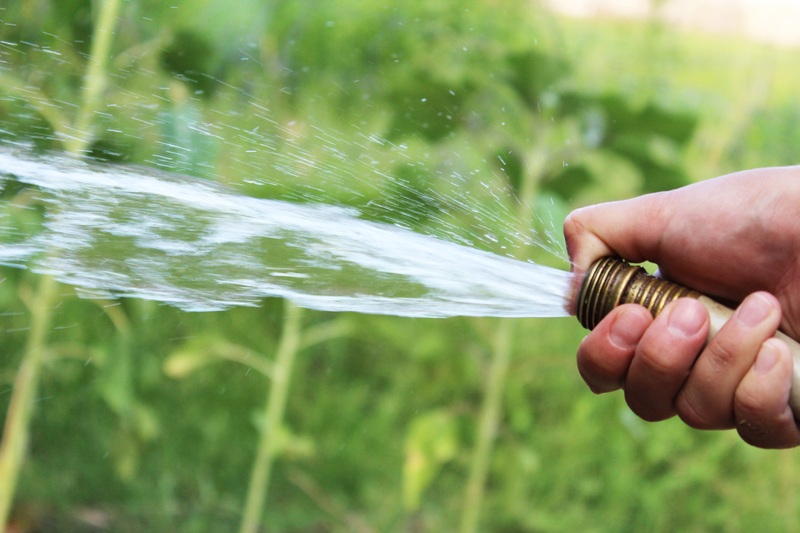
Just like mowing, watering grass is a year-round chore in Lakeland. However, Lakeland and Polk County have year-round watering restrictions for lawns and landscaping. These restrictions cover what days you can water, as well as the times.
How Often and How Much to Water?
Lakeland averages about 2 inches of rain each month during the winter, so the trick is to apply the correct amount of supplemental water. Generally, the University of Florida suggests watering on an “as-needed basis” — applying about ¾-inch of water and watering again when the lawn begins to show symptoms of drought stress.
Drought symptoms to look for in your lawn:
- Leaf blades folded in half lengthwise.
- The grass has a blue-gray tint.
- Footprints or tire tracks remain visible.
Pro Tip: If the city should have a dry spell, then water every two to three weeks, or when you see signs of drought stress.
Other Watering Tips:
Change your irrigation system settings. During summer in Lakeland, your lawn needs more water, more often. Leaving the system on that setting during winter overwaters the lawn, wastes resources, and could put you afoul of regulations.
Check the sprinkler’s watering depth. To make sure you’re watering the proper amount, measure the amount of water your sprinkler puts out.
Here’s how:
- Place measuring cups or cans (tuna or cat food cans are perfect) around your lawn. Mark cans to show the aimed-for amount of water.
- Adjust sprinklers so all the cans catch water.
- Water for a half-hour.
- Measure the water in each can. If you have your target amount, then you need to water for a half-hour. Adjust times accordingly if you have more or less than the target amount.
Best times to water. Early morning (preferable) or late afternoon. That mirrors Lakeland’s watering times — before 10 a.m. or after 4 p.m. But don’t water at night or too late in the afternoon. It doesn’t give the grass a chance to dry off, putting it at risk for fungal diseases.
6. Don’t Forget Weed Control
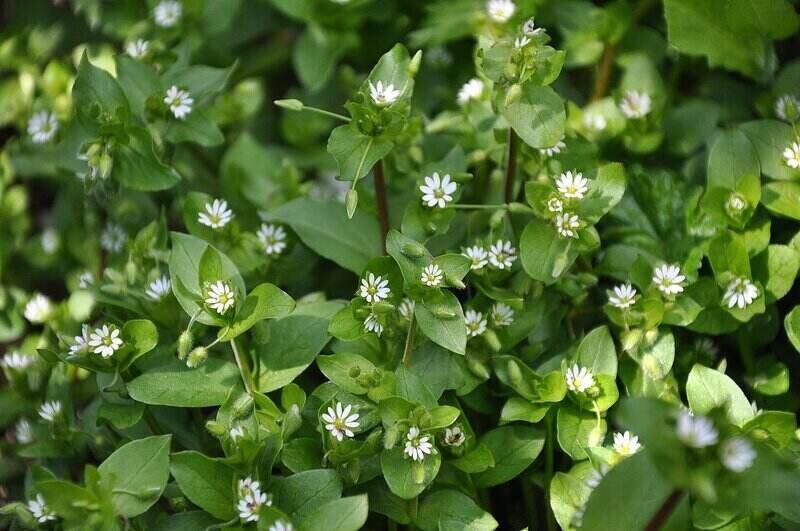
Think weeds are just a summer problem? Winter brings ideal conditions for several annual weeds to germinate, then pop up in the spring. They include:
- Lawn burweed. This weed is known for the hard, spiny burs it produces in the spring. These burs, which hold seeds, make walking uncomfortable for pets and impossible for barefoot humans.
- Hop clover. Like most clovers, this one has three leaves. The short stem is reddish and hairy. The plant can be low-growing, making it tough to mow.
- Chickweed. This is one of the world’s most widespread weeds and can be found in poorly-drained soil. Chickweed also is low-growing and creates a dense mat.
- Henbit. This member of the mint family produces pink to purple flowers that are an early source of nectar for pollinators. But it can be invasive, robbing your lawn of nutrients and finding its way into your garden.
- Annual bluegrass. Not to be confused with the cool-season Kentucky bluegrass, this weed produces grass tufts and is a prolific seeder, making it hard to control.
How to Get Rid of Annual Weeds
Prevention is key in the battle against annual weeds. A pre-emergent herbicide will keep them from taking hold — but timing is crucial. In Lakeland, the best time to apply a pre-emergent is in October, when air temperatures drop to between 55 degrees and 60 degrees several nights in a row.
If you miss that window, your options are limited. You can try a post-emergent herbicide if the weed seedlings are young. Otherwise, your best bet is to mow them; as annuals, they’ll die when temperatures start to climb in the spring.
7. Look Out For Lawn Diseases
Like most in Florida, your Lakeland yard can suffer from various lawn diseases. However, two fungal diseases — rust and large patch disease — tend to show up in fall and into the winter when temperatures drop.
Rust Fungus
Grasses affected: Augustinegrass and Zoysiagrass, but also perennial ryegrass used for overseeding.
Symptoms: Rust begins with yellow spots on the grass, followed by orange pustules that contain spores. Grass in heavily infected spots will turn yellow or brown.
Will it kill the grass? No.
How to treat it: Several chemical fungicides are available, including products made with:
- Azoxystrobin
- Mancozeb
- Metconazole
Natural methods include:
- Neem oil. Usually used against insects, some neem oil products can be used against rust and powdery mildew.
- Sulfur. This prevents spore germination, so it’s best used as a preventative.
Large Patch
Grasses affected: Large patch, formerly known as brown patch disease, affects all warm-season grasses, but hits St. Augustinegrass and zoysiagrass the hardest.
Symptoms: The disease begins with round yellow patches that will expand across the lawn. The borders may be orange; the center brown.
Will it kill the grass? If you have an overall healthy lawn, grass should come back over a couple of years.
How to fight it: Chemical fungicides are available, many of them formulated with azoxystrobin and pyraclostrobin. They should be applied as a preventative, usually in September and October.
Some natural methods include:
- Neem oil products
- Baking soda: Use a solution of 1 tablespoon to 5 liters of water and spray on the affected areas. Some suggest just spreading dry baking soda on the areas.
- Mow carefully: To avoid spreading the fungus, mow affected areas last and bag the clippings. Clean your mower blades and undercarriage when finished.
The best treatment, however, is prevention. Fungus thrives on dampness, so don’t overwater, and water in the morning if possible. Don’t use high-nitrogen fertilizer in fall and early spring.
8. Overseed for Color
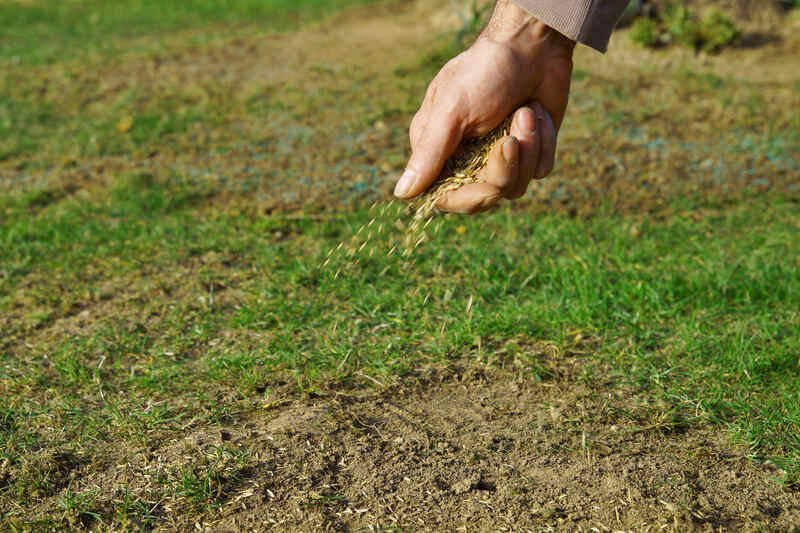
Whatever warm-season grass is in your Lakeland yard, it will go dormant once the temperatures start to drop. If you prefer a green lawn, you have an option — overseeding with ryegrass. This cool-season grass germinates and greens up quickly. It also handles foot traffic well, should you want a Christmas Day picnic.
A few tips on how to overseed your lawn:
Preparation is key. Before planting any seed:
- Rake the grass to remove debris. It also helps to loosen the soil.
- Cut the grass lower than usual. However, don’t cut St. Augustine lower than 3 inches. Be sure to bag or rake up the clippings.
- Use a broadcast spreader, and go over the lawn with a stiff broom to make sure the seed gets to the soil.
- Water. Follow the county’s regulations on watering new lawns, but in general, water lightly until the seeds germinate.
There is a downside to overseeding: You’ll have to mow and water the ryegrass regularly to keep it tidy and healthy.
So, what happens come springtime? It’s time to let the grass die out. Water infrequently and don’t fertilize. Once temperatures reach their normal spring highs, the ryegrass will die.
9. What to Do If a Cold Snap Hits
Lakeland seldom sees temperatures drop below freezing; The last time was in 2019/2020. However, frost can occur even if the temperature doesn’t fall below freezing and damage your lawn.
What Does Cold Damage Look Like?
In Bermudagrass or Zoysiagrass, frost might produce a rather artistic pattern — it’s been called a leopard print or a psychedelic print. However, should temperatures fall below 20 degrees, the grass will appear wilted, then turn brown or white.
So, what to do?
- If you suspect damage after a frost or freeze, stay off the grass and give it time to thaw. Walking on it will increase the damage.
- After giving the grass time to recover, mow it to the highest recommended length. This works best in late winter. If it’s patterned, you’ll eventually see the growth even out. At that point, you can go back to the one-third method of mowing.
- If your grass was hit by below-20-degree temperatures, it may be permanently damaged. If it doesn’t recover in spring, it’s time to seed or put down sod.
FAQ
Yes, but that doesn’t mean you can spray a few gallons of green house paint on your lawn. You’ll need a specially formulated turf colorant to paint your entire lawn in winter or cover a few brown spots during the year. You can make your own grass paint, order a commercial version that you can apply, or hire a local pro to do the job.
No, the best time for lawn aeration of warm-season grasses is late spring to early summer, which is when the grass is actively growing. That gives the grass time to recover and establish itself without being stressed by late-summer heat.
If after a cold snap, you aren’t sure if your grass is dormant or damaged, there is a way to find out.
● Just cut small plugs of the grass with roots attached and plant them in a flower pot.
● Place the pot in a warm, sunny spot and wait.
If the grass grows, then the rest of the plot will come back in the spring. If not, you may need to reseed or put new sod in that portion of the lawn.
When to Call a Professional
Lawn maintenance for your Lakeland yard doesn’t stop in the winter. But if you’d rather have the winter off, or want to hand off lawn care all year round, then consider a professional Lakeland lawn care service. Call today for a top-rated lawn-care provider who has the know-how to take care of your yard in any season.
Main Image Credit: John Holmes / Geograph / CC BY-SA 2.0